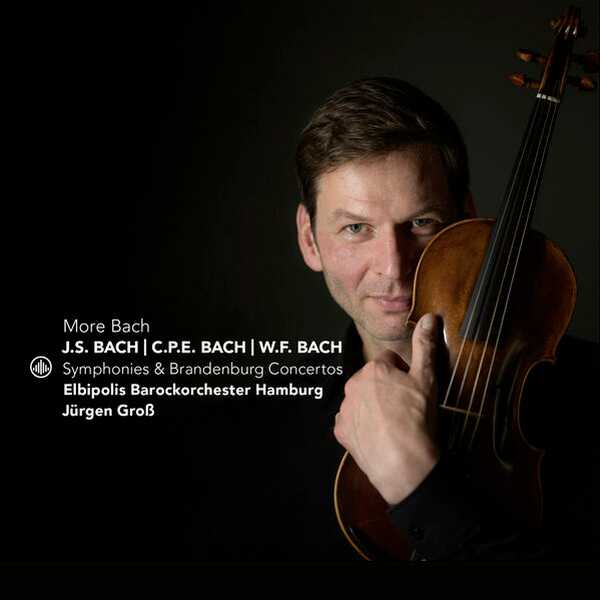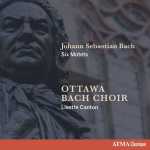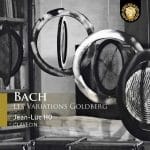

Composer: Carl Philipp Emanuel Bach, Johann Sebastian Bach, Wilhelm Friedemann Bach
Performer: Jürgen Groß
Orchestra: Elbipolis Barockorchester Hamburg
Format: FLAC (tracks)
Label: Challenge Classics
Catalogue: CC72960
Release: 2023
Size: 1.04 GB
Recovery: +3%
Scan: cover
C.P.E. Bach: Sinfonia in C major, Wq. 182 / 3, H. 659
01. I. Allegro assai
02. II. Adagio
03. III. Allegretto
J.S. Bach: Brandenburg Concerto No. 3 in G Major, BWV1048
04. I. (no tempo indication)
05. II. Adagio
06. III. Allegro
J.S. Bach: Brandenburg Concerto No. 5 in D major, BWV1050
07. I. Allegro
08. II. Affettuoso
09. III. Allegro
W.F. Bach: Sinfonia in F major, F. 67 ‘Dissonant’
10. I. Vivace
11. II. Andante
12. III. Allegro
13. IV. Menuetto I – Menuetto II – Menuetto I senza replica
The new disc from the glorious Elbipolis Barockorchester is devoted to the Bach family. The particular mark of the orchestra is evident: the freshness of the approach, the glittering sound, the lack of showing-off, the ingenious respect the score.
During the seventeenth and eighteenth centuries, the Bach family with its many branches occupied an exceptional position in Central German music life. Over several decades, its members were guarantors of high musical quality at numerous princely courts as well as at ecclesiastical and municipal institutions.
Among Bach’s best-known works written in Kothen are six instrumental concertos which the Kapellmeister dedicated in March 1721 to Margrave Christian Ludwig von Brandenburg, resulting in the title which is commonly used today, the “Brandenburg Concertos”. Stylistically, these works form part of the so-called “group concerto”, which was particularly popular in Germany. In this concerto genre different solo instruments are combined with each other, thus producing very different colours within one concerto.
In Brandenburg Concerto No 5 in D major (BWV1050), the transverse flute, violin and harpsichord take on the solo parts.
Brandenburg Concerto No 3 in G major (BWV1048), on the other hand, is entirely dedicated to string instruments. Three violins, three violas and three cellos form a trichoral structure above the continuo.
Bach was eventually appointed as Thomaskantor in the spring of 1723. In this new post, Bach was primarily responsible for composing and directing church music. Despite this workload, Bach also managed to find time in his Leipzig years to devote himself to instrumental music, including concertos. The Violin Concerto in A minor (BWV1041) survives as a set of parts from around 1730, which Bach almost certainly made for his Leipzig Collegium musicum.
The eldest son, Wilhelm Friedemann, is widely regarded as Johann Sebastian Bach’s “favourite son”, whose career he followed with particular paternal love and concern. He obtained his first position in 1733 as organist at the Sophienkirche in Dresden. Wilhelm Friedemann Bach’s Sinfonia in F major (Fk 67) for string orchestra was almost certainly written during his Dresden tenure.
Friedemann’s brother Carl Philipp Emanuel, four years his junior, also received his musical training from their father. It was the diplomat and music lover Gottfried van Swieten who encouraged Bach in 1773 to write new symphonies in which the composer could “let himself go completely without taking into account the difficulties that might necessarily arise for the performance”. They are characterised by rhetorical dynamics, great contrasts and often bizarre motifs, bearing witness to the unstoppable inventiveness of their creator.



